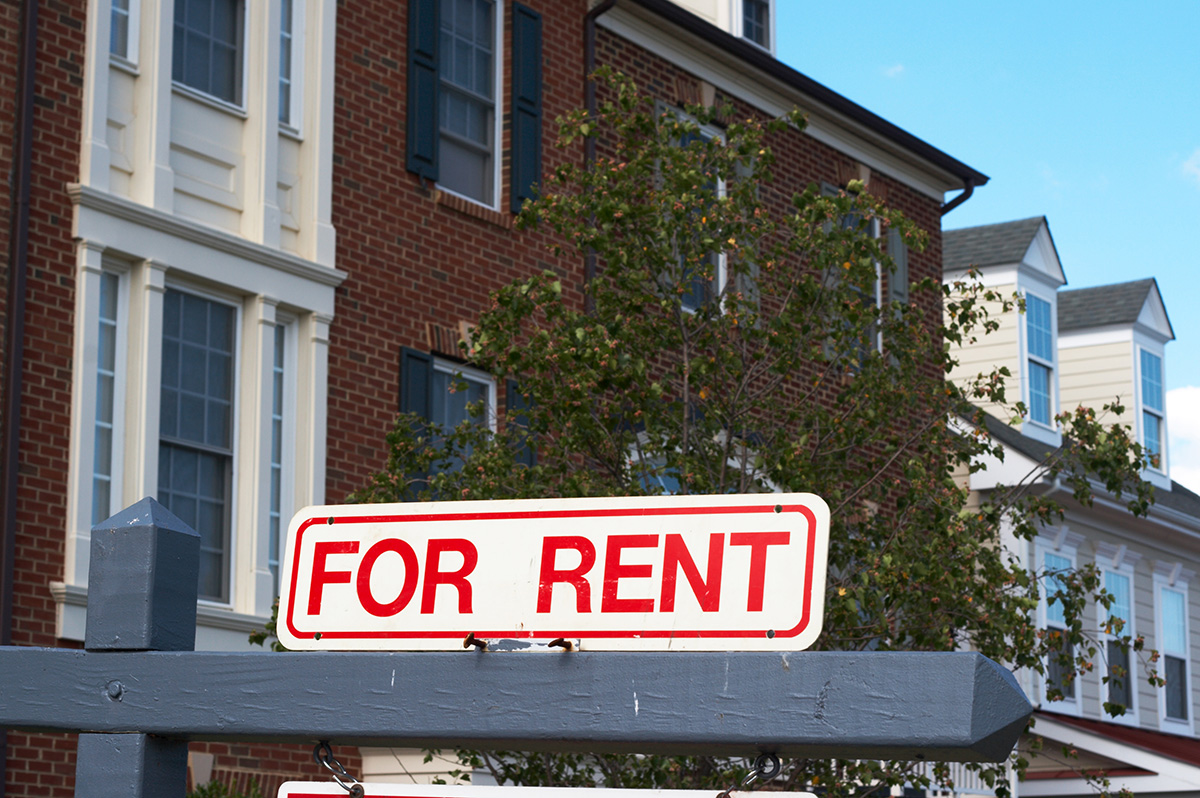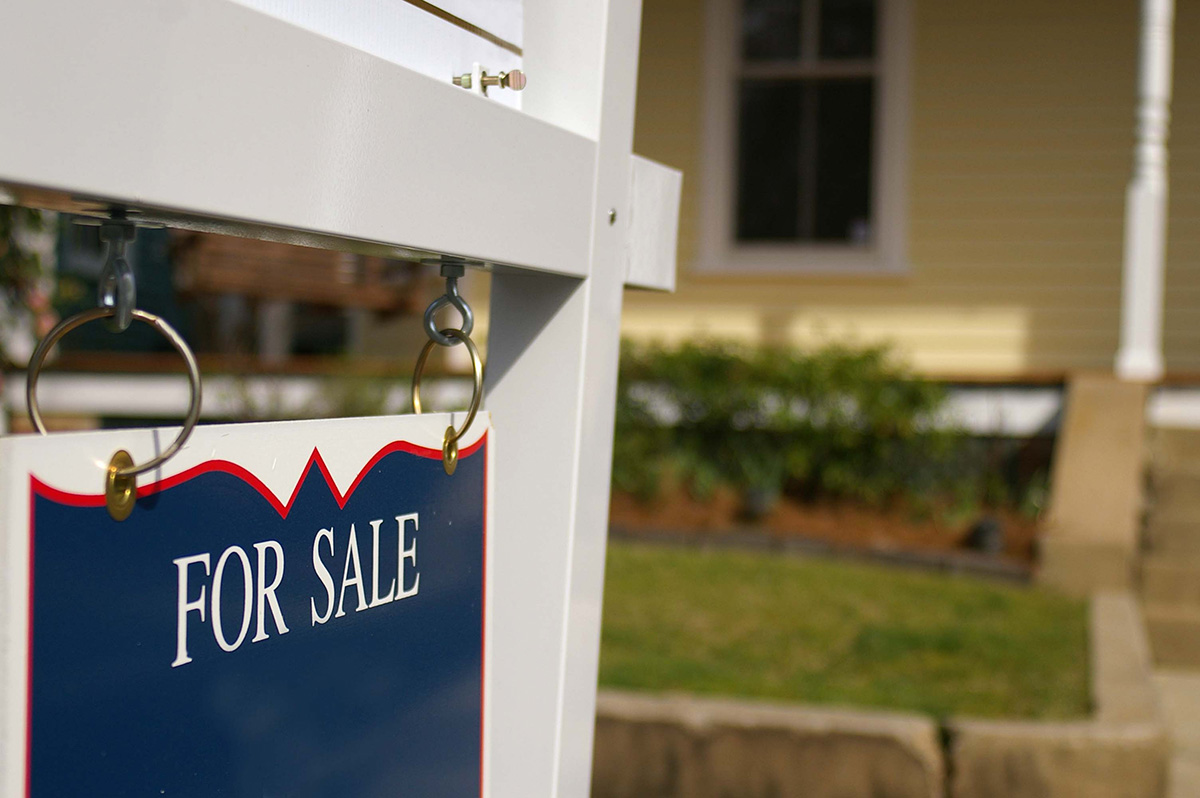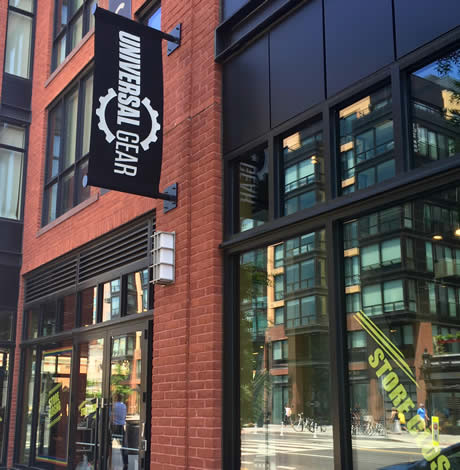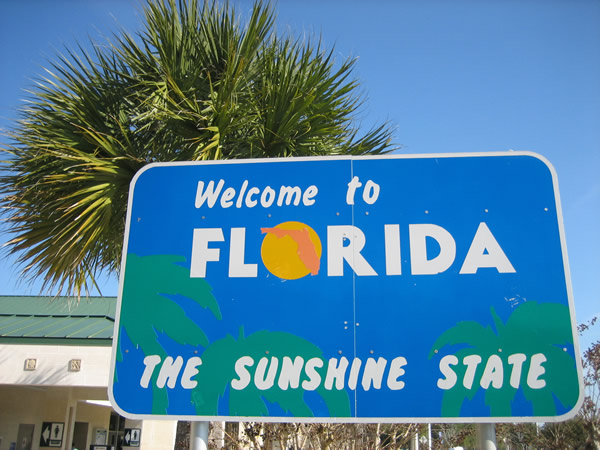Financial
A striking new ‘View’ on 14th Street

David Franco, a longtime local entrepreneur who co-owns Level 2 Development, opened View 14, a 185-unit apartment building in the bustling 14th and U corridor. (DC Agenda photo by Michael Key)
David Franco laughs as he recalls his foray into the entrepreneurial arena. It was 1989 and his good friend, John Guggenmos, was pulling together a group of investors to buy the nightclub Tracks. Franco, a fresh-faced 24-year-old, could not have known that Tracks would shortly experience its heyday and become the focal point of D.C.’s gay nightlife scene, making it a hugely profitable venture, but he smelled opportunity. Or at the very least a really good time. He was ready to jump at the chance.
There was just one snag: “I was not out at the time.”
Franco wasn’t among the legions of gay men and lesbians who came to D.C. to explore and embrace life outside the closet. The recent University of Maryland graduate was a native Washingtonian who had never lived anywhere else. He and his four brothers worked for the family business, a chain of discount department stores run by their father, and they all lived within a mile of each other in the Maryland suburbs. How would his family, especially his Orthodox Jewish father, react to having a family member who was not only gay but owned a gay nightclub?
“I went to my father and said, ‘Dad, I have this opportunity and the opportunity requires me to leave the family business.’” When his father asked what the opportunity was, Franco forced the words out. “I said, ‘I have the opportunity to go in with a group of guys to buy a [gay] nightclub.’ I thought my father was going to hit the roof. But instead he said, ‘If this is going to make you happy, you have my blessing.’”
The Tracks venture was the first step along a career path that would see Franco launch with his Tracks associates a new gay establishment in D.C., Trumpets restaurant, and with business partner Keith Clark start Universal Gear, a chain of clothing stores popular with gay men. Those accomplishments, however, were dwarfed with the opening last month of View 14, a $90 million 185-unit apartment building that he and business partner Jeff Blum developed and built through their real estate firm, Level 2 Development.
The building’s interior was designed in collaboration with local furniture store owners Jason Claire and Eric Kole of Vastu and has the feel of a boutique hotel: funky but modern, stylish with some flashes of whimsy. It boasts the usual upscale finishes like granite countertops and stainless steel appliances and an enviable array of amenities, some the kind you would expect in a new luxury building – roof decks with Weber grills, a party room, 24-hour concierge service, fitness center, underground parking – but some you might not have seen elsewhere, including a sculpture garden, yoga studio, fully loaded theater, and a screen in the cavernous lobby that tells you when the next green and yellow line trains will be arriving at the U Street Metro Station.
Franco likens View 14 itself to a “giant ship coming down 14th Street.” It’s a very fitting image, with the sleek and majestic glass, steel and stone structure seeming to glide down the hill from Columbia Heights to the U Street area. How View 14 came to be is a harrowing voyage in itself, fraught with the squalls and swells of a tanking real estate market and the ensuing lending crisis.
It was 2005, and Franco and Blum were finishing their first venture together, the development of a 12-unit apartment building on the 1400 block of Chapin Street, N.W., called the Mercury at Meridian Hill Park. The real estate market was moving from high gear into overdrive, Franco said, and the building sold out very quickly. Flush with excitement, the two decided that for their second project together they would go big in order to capitalize on the red hot market.
After losing a bid on a property in the NoMa neighborhood, they set their sights on the Petrovich Auto Repair garage at the corner of 14th Street and Florida Avenue, around the corner from the Mercury. The property was perfectly situated on a hill that would afford stunning views of the city, and was within a stone’s throw of the popular U Street corridor.
Unfortunately, owners Paolo and Pedro Petrovich weren’t exactly jumping at the opportunity.
“They weren’t prepared [to sell] at that time,” said Franco. “They wanted to reinvest [whatever profit they would make from the sale] but didn’t know what to do.”
Undeterred, Franco and Blum made themselves a fixture at the Petroviches’ garage. “One of us would be in there at least once a week, seeing how things were,” often over lunch. “We really cultivated a relationship.” Franco, meanwhile, diligently researched opportunities for the Petroviches to reinvest their money. When the brothers took him up on a suggestion to tour some CVS stores in the Baltimore area, Franco began to feel guardedly optimistic.
Several months later, after a delicate dance with the Petroviches that could only be described as a wooing, complete with the appearance of a rival suitor, Franco and Blum won the sale.
Once that first major hurdle was cleared other challenges followed – finding a suitable architect and investment partner, navigating city bureaucracy to get the requisite permits to build a large scale condo building where an auto repair shop used to be, making expensive arrangements for the grounds to be cleansed of several decades worth of oil and gasoline seepage – but those were overcome with hard work and perseverance.
Franco and Blum quickly found strong support for their project among D.C. politicians, with Mayor Adrian Fenty attending the groundbreaking and Ward 1 Council member Jim Graham stepping in to facilitate communication with Comcast, which had been unresponsive to Franco and Blum’s appeals to discuss with them the relocation of Comcast-owned satellite dish equipment and a signal receiver tower from the View 14 site. Graham would later champion legislation that gave the View 14 project $5.7 million in tax abatement.
The View 14 developers also won kudos from local community leaders and the city government by donating $1 million to the residents of Cresthill Apartments toward the purchase of their building and the formation of a cooperative. This was done as part of their deal with the city, which requires developers to provide affordable housing if they are building a high-density project. Rather than set aside units in the new building for that purpose, as is normally done, the View 14 developers, seeing need in their community, chose instead to donate needed funds to the Cresthill residents, whose building was less than a block away and was soon to be sold on the open market.
“I never will forget the first day I met David,” said Sankofa Cooperative president Sheila Royster, who has lived in the Cresthill Apartments building for 40 years. “He came to my unit and he brought me a plant. I thought that was wonderful. It was a genuine gesture and to me it just demonstrated his respect for us and what we were doing.”
Dark clouds began to loom though as speculation that the housing market was cresting gave way to fears of a housing bubble that could burst at any moment and send property values tumbling. Still, Franco and Blum were confident. More than 1,000 people attended the lavish launch party in September of 2006. Rival developers nervously dubbed View 14 “The Death Star” because it was expected to “suck up all the other condo purchasers in the market,” Franco said. “We were excited.”
Contracts trickled in, a dozen and a half in the first two months, and the cold reality set in: they weren’t selling enough units to finance the start of construction on time. It might be months, or even a year, before they reached that point. If they were able to reach that point.
The two men sat down with their project partners and made the difficult decision to re-engineer View 14 as a rental project. “It was literally the million dollar decision for us,” said Franco. “We had spent a million dollars in marketing and building a sales center.”
Franco said that he and Blum have accepted a letter of intent from a “well-known retail and services establishment in the area” that will use 8,000 square feet of space to expand their facilities.
“The neighborhood is going to be ecstatic when they learn who’s going to be there,” he promises. A signed lease and announcement is expected soon.
Franco is just as ebullient when he talks about the 14th and U Street neighborhood and its future. He points out that the Solea, a condo building directly across 14th Street from View 14, has nearly sold out. And there is just one unit left for sale at Union Row, the massive, 216-unit condo building that also houses Yes! Market, a CVS, and the restaurant Eatonville.
“That speaks volumes to the desirability of this neighborhood,” said Franco.
About 25 leases have been signed so far and the first View 14 residents moved in over Thanksgiving weekend, among them Galan Panger, a 24-year-old gay man who is leasing a studio. Panger, who works in Google’s downtown D.C. office, said he was impressed by the quality of the building’s construction and with the finishes. The amenities solidified the decision to trade in his digs at nearby Union Row for View 14.
“It was nice of them to create these community spaces,” Panger said. “My boyfriend and I have been grilling even though it’s been cold.” They have been sticking to the east roof deck after Franco joked during a tour of the building that it was the gayer of the two rooftop spaces since it has “the more fabulous view.”
Franco himself is one of View 14’s newest tenants, along with his dog; last week he sold his home near Meridian Hill Park and they moved into one of the penthouse units.
Franco sees a wide mix of people coming to View 14, from single young professionals to retired couples. There is also a fair bit of traffic from gay and lesbian renters like Panger, which Franco attributes to a variety of factors, including the fact that the building bears the strong imprint of two openly gay men, he and Blum, as well as the influence of other gay men they know like Claire and Kole of Vastu and Chris Cahill, a good friend of Franco’s who works for Botanical Decorators and came up with the idea for using the courtyard space as a sculpture garden and helped select the sculptures and interior plants.
People, gay and straight alike, Franco observed, appreciate quality and, “not to rely too heavily on stereotypes, but gay men have a natural attention to detail. We as gay men are [attuned] to high style, high design and convenience. This building delivers that.”
Real Estate
Stress-free lease renewals during winter months
A season when very few tenants typically move

January has a way of waking everyone up. After weeks of holiday noise, travel, family visits, and a general blur of activity, the new year arrives with its usual mix of resolutions, optimism, and responsibility. People start looking at their calendars again. To-do lists reappear. And tucked away in there is something many tenants didn’t give much thought to in December, their lease renewal.
Renewals in winter matter more than most people realize. It is a season when very few tenants typically move. The weather is unpredictable, schedules are tight, and most people are trying to regain their footing after the holidays. Because of this, renewal conversations tend to be more productive and more grounded.
Many landlords think of spring and summer as the heart of leasing season, and while that’s certainly when moves are most common, winter renewals hold their own kind of importance. A well-timed renewal does more than keep a unit occupied. It provides predictability for the year ahead, strengthens relationships, and reduces the costly turnover that smaller landlords want to avoid.
In my experience, tenants who might hesitate during another time of year are often relieved to secure housing before the pressures of spring and summer begin. Uncertainty is one of the prime causes of unnecessary turnover. If tenants don’t hear from their landlord, they often start browsing listings “just in case,” or asking friends about other options. Once that door is opened, it can be hard to close. Initiating the renewal process early helps anchor tenants before doubts start creeping in.
Tenants often make clearer decisions in January than they would in November or December. During the holidays, people are distracted and stretched thin; emails are skimmed, not absorbed; and anything involving planning often gets deferred until “after the new year.” When tenants return home in January, they have a better sense of their plans, their budget, and their needs for the coming months. This makes it a much easier moment to start or restart a renewal conversation.
The practical reality is that most tenants don’t want to move in the winter. Who wants to haul furniture across icy sidewalks or deal with last-minute moving delays due to storms? Beyond the weather, January is a time when people are reorganizing finances, filing paperwork, and settling into routines. The thought of a major transition simply doesn’t fit. Landlords can use this natural reluctance to create a smoother, more collaborative renewal process.
One thing I’ve learned over the years is that clarity is a landlord’s best tool. Tenants don’t need lengthy explanations, legal jargon, or complicated attachments. They simply want to know:
- Are the terms changing?
- If so, how?
- What does their timeline look like?
- Would the landlord consider another set of terms?
A concise, well-laid-out renewal offer does two things. First, it demonstrates transparency, which builds trust. Second, it keeps the conversation focused and productive. When tenants understand exactly what’s being proposed, there is less back-and-forth, fewer misunderstandings, and a quicker path to a signed agreement.
Tenants are more receptive when they feel they’re being treated fairly and openly. If there’s a rent adjustment, a brief explanation helps tenants see the reasoning behind it, such as increased operating costs, significant maintenance completed during their stay or alignment with the market.
Lease renewals are moments of connection. The best landlord-tenant relationships are built over time through small exchanges, transparency, and mutual respect. Renewal season offers an opportunity to reinforce that.
A simple acknowledgement of the tenant’s care for the home or their timely payments can set a positive tone. Even a short note of appreciation signals that you see them not as a lease term, but as a partner in maintaining the property. These gestures cost very little but create a sense of goodwill that carries through maintenance requests, policy reminders, and everyday communication.
Many landlords underestimate how much tenants value being treated as individuals rather than account numbers. A thoughtful, personal touch during the renewal process can make a tenant feel recognizednand more inclined to stay.
Renewals aren’t only about securing another term lease.They’re also a natural moment to check in on the overall health of the property and the tenant’s experience. J anuary provides a quiet space to step back and ask:
• Are there maintenance concerns the tenant hasn’t mentioned yet or that have not been fully resolved?
• Is the property due for upgrades or any preventative work?
• Are there responsibilities or expectations worth revisiting?
These conversations don’t need to be long or formal, but they help prevent the small issues of one year from becoming the larger problems of the next. A tenant who feels heard is more likely to take good care of the home, communicate proactively, and renew again in future years.
While landlords must maintain structure and protect their assets, a bit of flexibility can go a long way during the renewal process. Tenants are often rebalancing budgets after holiday spending. Offering digital signatures, Having brief calls to clarify terms, being flexible, or a few extra days to make a decision can ease stress without compromising the landlord’s position.
Flexibility is about recognizing human realities. Most tenants appreciate being treated with patience and professionalism, and often reward that consideration with prompt decisions and smoother communication. There are many reasons why a full year renewal may not coincide with their plans. Being able to work out mutually agreeable renewal terms makes the solution a win for both parties.
For landlords, especially smaller ones, stability is the foundation of successful property investing. A vacant unit, even briefly, costs more than most people realize. There are marketing expenses, cleaning, repairs, lost rent, and the unpredictable timeline of finding the right new tenant. By contrast, securing a renewal with an existing reliable tenant protects cash flow, reduces risk, and creates predictability in planning.
January renewals, when handled well, deliver this stability right at the beginning of the year. They give landlords a clear roadmap for budgeting, maintenance scheduling, and forecasting. They also give tenants the security of knowing exactly where they stand, which reduces stress on both sides.
A lease renewal may seem like a small moment in the life of a property, but in practice, it shapes the experience of the year ahead. When the process is organized, honest, and respectful, it sets a tone that carries through every interaction until the next renewal date.
January is a time to consider leaning into this approach. The pace is slower, the mindset is clearer, and both landlord and tenant are ready to step into the year with more intention. A renewal handled thoughtfully now paves the way for a smoother, quieter, more predictable twelve months, something every landlord and every tenant can appreciate.
Scott Bloom is owner and senior property manager at Columbia Property Management.
Real Estate
Child- and pet-proofing your home for the holidays
It isn’t about being perfect but about being prepared

The holidays are meant to be joyful, cozy, and full of laughter — but if you have young children or pets, they can also feel a little chaotic. Twinkling lights, shiny decorations, guests coming and going, and tables full of tempting food can turn your home into a wonderland of curiosity and mischief. The good news? With a little thoughtful planning, you can keep the holiday magic alive while making your home safer for everyone who lives there.
There’s something oddly comforting about movies where animals go to war with holiday decorations, turning carefully strung lights and perfectly placed ornaments into chaos. Whether it’s a mischievous dog tangled in tinsel or a curious cat launching a full-scale assault on a Christmas tree, these scenes tap into a universal experience for pet owners.
The humor comes from the contrast: the human characters are trying to create warmth, tradition, and picture-perfect cheer, while the animals see the decorations as toys, obstacles, or personal enemies. The resulting destruction — trees tipping over, ornaments shattering, lights blinking out—feels exaggerated but relatable, especially during the already hectic holiday season.
Let’s start with decorations because they tend to be the biggest attraction. Ornaments sparkle, garlands dangle, and everything seems designed to be touched, pulled, or tasted. If you have little ones or pets, consider placing your most fragile ornaments higher on the tree and using shatterproof options on the lower branches. Tinsel and ribbon may look festive, but they can be dangerous if swallowed, so skipping them or keeping them well out of reach is a simple way to reduce risk without sacrificing style.
Holiday lights are another favorite fascination. Before hanging them, take a few minutes to inspect each strand for frayed wires or broken bulbs. Secure cords along walls or behind furniture so they’re harder to grab or chew and unplug them when you leave the house or head to bed. Not only does this help prevent accidents, but it also gives you one less thing to worry about during a busy season.
The Christmas tree itself can become a focal point for exploration. Make sure it’s sturdy and well-anchored so it doesn’t tip if a toddler tugs on a branch or a pet decides to investigate. If you use a real tree, cover the water base since tree water can contain additives that aren’t safe if consumed. For artificial trees, keep an eye out for loose pieces or needles that could become choking hazards.
Food is a big part of holiday celebrations, and it’s also one of the most common sources of trouble. Many traditional treats—like chocolate, grapes, raisins, alcohol, and foods containing xylitol—are dangerous for pets. Keep plates and serving dishes up high, secure the trash can, and gently remind guests not to slip pets or kids “just a little bite” without checking first. For children, be mindful of hard candies, nuts, and small treats that could pose choking risks.
Candles and fireplaces add warmth and charm, but they deserve extra caution. Flameless candles are a wonderful alternative if you want ambiance without worry. If you do use real candles, place them well out of reach and never leave them unattended. Fireplaces should always have a sturdy screen or gate, especially with crawling babies or curious pets nearby.
Holiday gatherings bring wonderful energy into your home, but they can also create new challenges. Doors opening frequently make it easier for pets to slip outside, so consider setting up a quiet, comfortable space where they can relax during busy get-togethers. This can help reduce stress for them and give you peace of mind. For children, stair gates, locked cabinets, and clear boundaries can help prevent accidents when there’s extra excitement in the air.
New toys and gifts are another thing to watch closely. Packaging, twist ties, plastic wrap, and especially button batteries should be cleaned up promptly. These items are easy to overlook in the excitement of gift-opening but can be dangerous if swallowed. Taking a few minutes to tidy up as you go can make a big difference.
Lastly, try to keep routines as steady as possible. The holidays naturally disrupt schedules, but familiar mealtimes, naps, walks, and bedtime rituals help children and pets feel secure. A calmer household often means fewer accidents and a happier experience for everyone.
At the end of the day, child- and pet-proofing your home for the holidays isn’t about being perfect but about being prepared. A few small adjustments can help you relax, enjoy your guests, and focus on what truly matters: creating warm, happy memories with the ones you love. When your home feels safe, the holidays feel even sweeter.
Valerie M. Blake is a licensed Associate Broker in D.C., Maryland, and Virginia with RLAH @properties. Call or text her at 202-246-8602, email her at [email protected] or follow her on Facebook at TheRealst8ofAffairs.
Real Estate
In real estate, trust the process
With rates coming down, we could see spring surge in buyers

The average 30-year mortgage rate is falling, little by slowly. With predictions that the rate will continue to adjust downward in the next year or two, there may be a busier spring market than we have seen in the last few year, especially for the DMV market, which has been reeling from thousands of layoffs this past year. The frenzied activity resulting from interest rates close to 3% for some borrowers will probably not occur; however, this spring could add up to be a few notches busier than the last.
What does this mean for buyers and sellers? Lender Tina Del Casale with Waterstone Mortgage says she has seen “low to mid 6’s as the average for conventional loans.” If rates continue downward into the 5% range, there may be more activity than we saw in the last year or two. This could release a little bit of pent up demand.
Many buyers will have found that for whatever reason, their current home is not meeting their needs. Sellers may want to finally take the plunge and put a for sale sign in the yard and online, now that they might find a more reasonable rate on their next home. This winter can be an opportunity to assess financial situations, home conditions, and optimize one’s chances to have a sale with more agreeable terms, or put one’s best foot forward in an offer. In addition to checking with a lender or favorite handy person, let’s review what sellers and buyers typically spend their energy negotiating while enjoying the lovely process called “going under contract”:
- Timelines – Sellers might want to have their house solidly under contract (papers signed, thumbs up from the lenders, all inspection items decided upon and settled) so that they can put an offer down on a new home, and then negotiate that timeline with the other sellers. Remember, making a move is not only about the buyer taking possession of a new home, but also about the sellers figuring out their situation as well.
- Sale Price – unfortunately for buyers, in the eyes of most sellers, “money talks.” So, in a non-competitive situation, a seller might be happy to just get one offer at a price that was within the desired range. As soon as another interested buyer enters the equation, it can become a little bit like RuPaul’s Drag Race, and one will have to lip sync for one’s life, honey! And only one buyer will get to hear the words, “condragulations!”
- Tone/Vibes/Energy in the Room – Remember: Human beings are emotional creatures. All of us have feelings. And all of us want to put energy into situations where we feel appreciated, where a level of self-awareness exists, and a sense that each side is trying one’s hardest to act in good faith. The best transactions I saw were where a little grace was the “grease on the wheels” of the transaction. Occasionally, a buyer had cold feet and wanted to see the unit a few more times before the settlement date, or a seller forgot to scrub the bathroom with a little extra elbow grease before the settlement date. Life happens; misunderstandings can occur. A wise therapist once said: “You don’t have to like it, but can you allow it?” The tone of one or both parties in the transaction can be what seals the deal, or results in one party exiting the contract. (In the case of the dirty bathroom, the seller left a check with the title company for the buyer to pay a housekeeper to come clean what they couldn’t.)
Joseph Hudson is a referral agent with Metro Referrals. He can be reached at 703-587-0597 or [email protected].
-

 Photos5 days ago
Photos5 days agoPHOTOS: ‘ICE Out For Good’ Sunday protests
-

 U.S. Supreme Court3 days ago
U.S. Supreme Court3 days agoSupreme Court hears arguments in two critical cases on trans sports bans
-

 Virginia5 days ago
Virginia5 days agoMark Levine running in ‘firehouse’ Democratic primary to succeed Adam Ebbin
-

 Arts & Entertainment5 days ago
Arts & Entertainment5 days agoTeyana Taylor, Erin Doherty have big night at Golden Globes

















